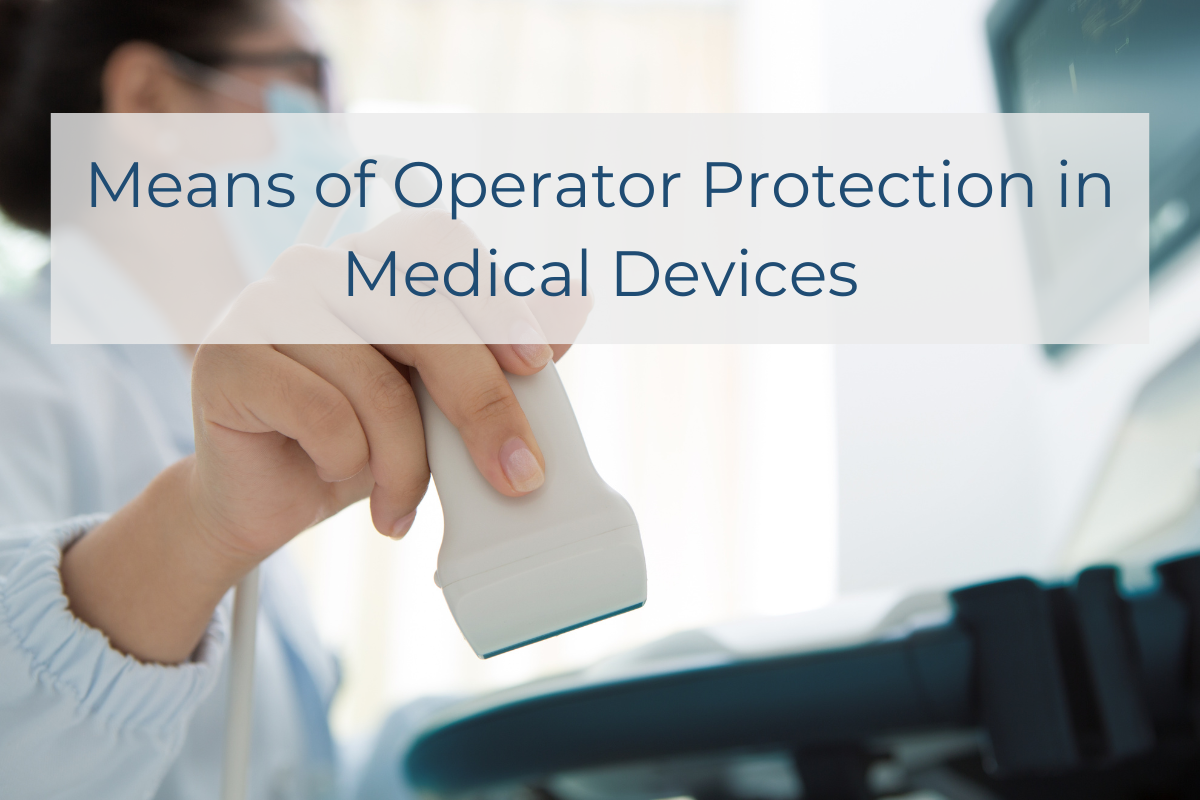Means of Operator Protection in Medical Devices
A safe medical device is a compliant medical device, and that means one that is safe for both operators and patients. Medical devices play an important role in healthcare – they’re meant to promote wellness, not cause harm. To do this successfully, medical devices need to meet certain means of protection (MOP) standards. In this blog, we’ll be discussing means of operator protection, or MOOP.
What are Means of Operator Protection (MOOP)?
Means of Operator Protection (MOOP) are mostly used when talking about medical devices; however, they can apply to other tools, such as industrial machinery or power tools. MOOP are the ways a medical device reduces the risk of electric shock for people who aren’t the patient. As the name suggests, these features usually apply to the operator.
MOOP is really a subcategory of MOP, or Means of Protection. The larger category refers to any measures taken to keep users safe from electrical shock that can come from medical electrical equipment.
Why is MOOP important?
First and foremost, MOOP is important because medical devices should be safe to use and operate. When the correct steps are taken via MOOP, there is a reduced risk of electrical shock, reduced liability for manufacturers, and improved safety and peace of mind.
What are the types of MOOP?
The means of operator protection for medical devices will vary based on the type of device, but the biggest things to think about from the operator side include insulation, grounding, isolation, residual current devices (RCDs), overcurrent protection, warning labels, non-conducting floors, and personal protective equipment (PPE).
Insulation
The operator should be separated from live parts of a medical device using insulation, which is most commonly made of plastic, glass, or rubber. Insulation is one of the prime methods for protective separation – keeping distance between the operator and the potential source of shock.
Grounding
Grounding, also known as protective earthing or protective earth connection, involves connecting the medical device to the earth so that leakage current moves to the ground instead of through the body of the operator. A fuse or a circuit breaker needs to be included to be considered a MOP.
Isolation
With isolation, the medical device is separated from the main power supply using something like capacitors are transformers. Isolation helps keep operators from contacting live electrical parts, preventing injuries or fatalities from electric shock. Isolation can be met by other MOOP measures, such as insulation or protective barriers.
Residual Current Devices (RCDs)
A residual current device (RCD) can detect small current leaks and shut off the power automatically if one is found. By shutting off automatically, the RCD mitigates the risk associated with a current leak reaching the operator and causing an electric shock.
Overcurrent Protection
Similar to RCDs, this device can shut off the power automatically if the current gets too high, which keeps the medical device from overheating. Overcurrent or overheating can cause shock or fires.
Warning Labels
While manufacturers should strive to make their medical devices as safe to handle and operate as possible, there may still be parts of the device that can be dangerous when mishandled. To prevent injury, warning labels should be displayed prominently on equipment, clearly indicating potential hazards.
Non-Conducting Floors
Outside of the device, operators also need to be mindful of their surrounding environment. Non-conducting floors, such as rubber and plastic, do not conduct electricity. If the operator is in contact with any live electricity, the current won’t flow through their body because the ground will not serve as a conductor.
Personal Protective Equipment (PPE)
Another non-device consideration is personal protective equipment (PPE). This can include equipment like rubber gloves and mats that protect against shock. However, PPE should just be considered an additional measure of protection, and not a replacement for MOOPs used in medical devices.
Other Means of Protection Considerations
Protective separation can also be met and be determined to achieve Means of Protection through air clearance and creepage distance. An air clearance standard determines the shortest distance through air that two conductive parts can be. Creepage distance is the shortage distance that two conductive parts are allowed to be apart from one another when along the surface of the insulating material.
How to implement MOOP with equipment design
Medical electrical equipment can achieve two different levels of means of protection from electrical hazards, as defined by the EN 60601-1 standards. Depending on the specific use of the device, allowable levels vary.
With one MOP level (1xMOP), the device has basic protection against electric shock. With two MOP levels (2xMOP), there is some kind of enhanced insulation, either double or reinforced insulation, that is present in case the first level of MOP fails.
While some power supplies can be reconfigured to meet two levels of standards, other power supplies are already rated to 2xMOPP, which means they meet stricter requirements than what is even outlined by MOOP.
RAM medical power supplies have been designed to meet 2xMOPP protection, making them safe for both operator and patient. Contact us with any questions or to place an order.
More Resources:
Means of Patient Protection in Medical Devices
EMC Compliance Testing for Medical Devices
Current Trends in the Medical Device Industry
